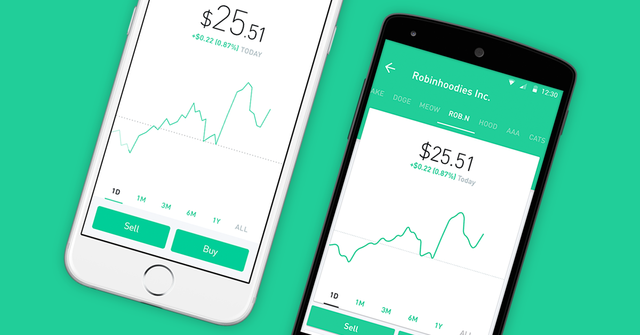Financial Tip of the Day #1 - What Investment Companies DON'T Want You to Know

There are two people sitting in a bar. One tells the other that they're thinking about investing in the stock market. The other says they are too and ask them about their strategy. The first person says that they hired a rockstar financial advisor who told him that based on his track record, he could DOUBLE his money in only 9 years! The second investor is going to invest his money on his own in an index fund. Which investor ends up with the most money after those 9 years?
You've probably heard a story told in this way before, and know that the second investor ends up making more money, but why? Welcome to the hidden world of finance!

Hidden Fees
The stock market is an amazing opportunity for the everyday individual to make some passive income. It allows you to make money while you sleep, when you're making your breakfast, or watching a movie on netflix. The only problem is that most investors are having their profits eaten away by fees! The typical investment management firm has two main types of fees - management fees and investment/advisor fees.
Management fees are a set investment rate every year. On average they are 1-2% of your balance. You get charged these fees EVEN IF YOU LOSE MONEY. You just paid a company to lose you money... doesn't make much sense right?
Investment/advisor fees are based on the money you make. Fortunately, if you lose money on your investments, you don't charged a fee. However, these fees are typically 15-20% of your gains every year.
I find it helps if we put actual monetary values behind this, so let's do a quick illustration. Say you have $100,000 in the stock market. This year your investment manager did a great job and made you 8% on the market! So you should have $108,000 right? Wrong.
Starting balance - $100,000
Gains for the year - $8,000
Management fees (average based on beginning and ending for illustration purposes) - $104,000 * 2% = $2,080
Investment/advisor fees - $8,000 * 20% = $1,600
Actual ending balance = $104,320, or a 4.32% return.

What can you do?
There's some great news! You DON'T need to invest with these investment managers! In fact, very few of them actually beat the market average return from the S&P 500. It's a common misconception that many people don't realize. They assume that as professional investors, they are beating the market. The real truth is that 90% of investors don't beat the market on a consistent basis.
Instead of investing with these investors, you yourself can invest in the index funds. When making the investment, you can invest in a variety of funds and exchange-traded funds (ETFs). The SPY ETF is one ETF that you can invest in through the popular trading app, Robinhood. The SPY tracks the S&P 500 and has had the following returns per Robinhood:
3 month - 4.03%
1 year - 18.85%
5 year - 92.69%
The average return of the S&P since it's inception in 1928 has been roughly 10%. This has been an exceptional year for the S&P 500, so I would not anticipate an $18.85% return on a yearly basis from the SPY, but this shows you the power of the index.
Quick side note - A great app to use to invest is Robinhood as it has no commissions, so trading is free. Most other investing sites cost $5-10 per trade. Here's a link to Robinhood - http://share.robinhood.com/patrico137.

Let's compare
We've now talked about investment manager's returns, their fees, and the typical return of the S&P 500 index fund. So now let's compare the two methods and how they can impact your financial situation after 20 years. We're going to go back to the $100,000 starting balance, and we'll be generous to the investment managers and say that both they and the S&P 500 return 10% every year for the twenty years. What would your ending balances be?
For this we'll need a future value formula - FV = Initial investment * (1+r)^t
Investment manager option:
With a return of 10% a year, we can factor in the management fee to drop the yearly return to 8%. We can then also take 20% of the 10% (2%) off of the 8% for the investment/advisor fee. After these fees we can average the return at 6%.
FV = 100,000 * (1+.06) ^ 20
FV = $320,713.50
Index fund option:
With the index fund, we retain the full 10% return.
FV = 100,000 * (1+.10) ^ 20
FV = $672,750
As you can see, the power of compounding interest allows you to realize an extra $352,036.50 when you are not dealing with fees.
Policies differ between investment managers. Some have higher or lower fees, and other manager specific policies. Make sure that you read all of the terms and conditions of your agreement, and are fully aware of their financial impact. Over the course of the next month I'm going to be providing a financial tip of the day each day. If you'd like to keep up with these posts, please give me a follow up and upvote!
**
I hope that you found this post interesting. If you have any questions, please comment below. My goal with this profile is to make frequent posts about finance, cryptocurrencies, investment, and wealth generation. I plan to not only make posts, but also youtube videos, and give away free excel workbooks to assist you in your personal finance goals. If this interests you, please let me know and follow my profile. Additionally, if you would like to reach out and ask any questions/request that I make a post on a topic, please reach out to me at [email protected].
**
Great post, you do a good job of simplifying the pointlessness of having a money manager, but then you don't explain the inputs in the FV formula.
Also to be fair while index is far and away the winner, it is not fee free.
With dividend yields so low, it seems the market just doesn't compound like it used to. And while every broker everywhere likes to cite the 8-10% number, in real terms the market went nowhere for a decade after 2000.
I was playing with the idea of making a post for the world's easiest trading strategy. Save your money, make 1% a year or whatever. Wait til a market crash, invest all of your money in a low fee vanguard spy etf. Sell everything after 7 yrs. Repeat.
Even after long term capital gains tax and a -2% a yr inflation while you save, and lost opportunity cost (in yr 8,9, etc) I think this would still be a great strategy for the average Joe.
Just a fun thought that would probably never work due to investor psychology.
Thoughts?
It's an interesting concept that you bring up, and is actually one of my favorite trading strategies. I wouldn't necessarily do 7 years, but I definitely do a similar strategy. Personally, mine deals with bonds and stocks. I try to enter the market when its low, ride it up to around the amount where it started going down + whatever the deviation was between that and it's lowest point. At that point, or gradually as it gets to that point, I would take out 50-75% of my position and either hold onto it, or put it into bonds. If stocks decline, bond prices go up, and rinse and repeat. If stocks continue going up, well then you just realized your profit.
Currently I'm not invested in the traditional stock markets at all as I'm expecting a correction or possible recession in the near future. I will however be getting into the market once that happens.
That's a pretty good idea. I'm sure you are much more disciplined than the average joe. I just wish sometimes I could give my friends something that didn't require too many moving parts.
Same, I'm mostly invested in commodities.